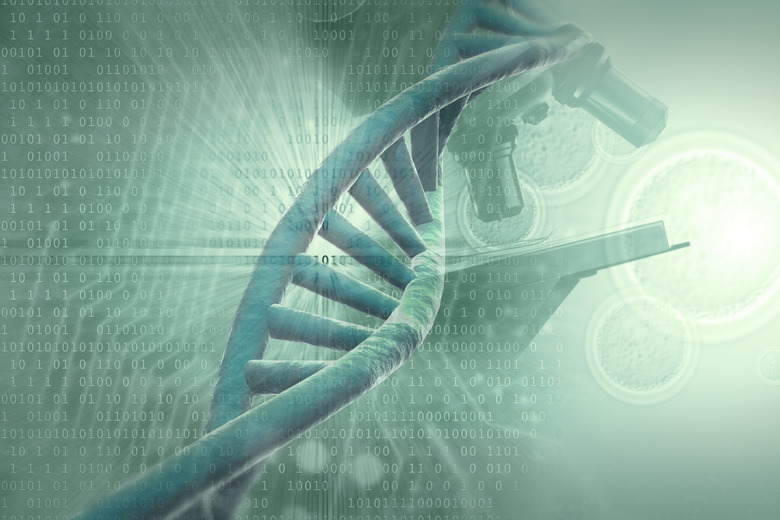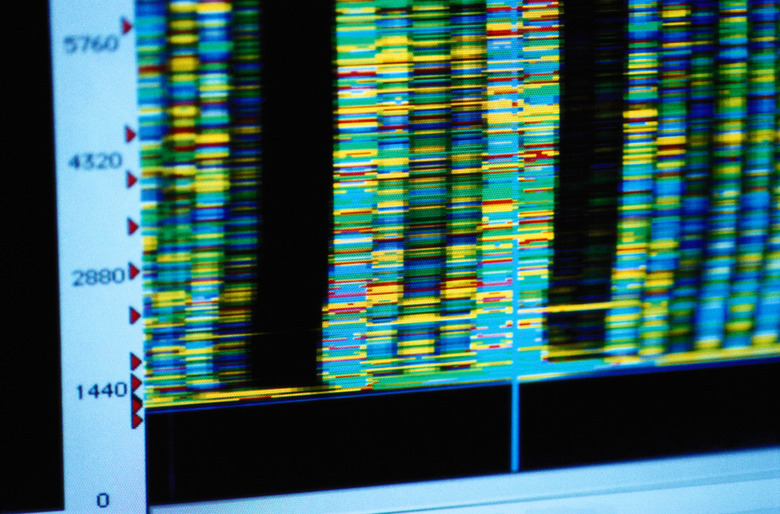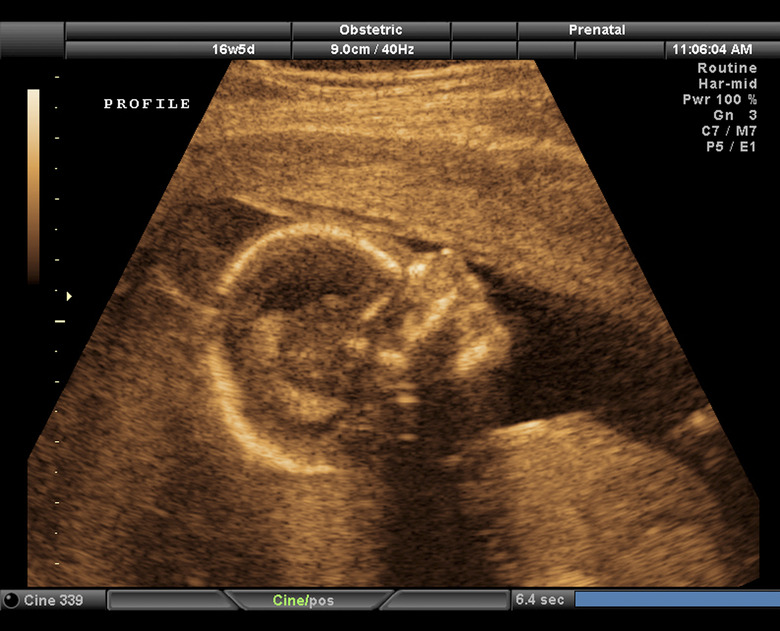What Influences Phenotype?
In order to understand the potential influences on phenotypes, it is first important to understand the relationship of phenotype to genotype. Genotype is the classification of living things based on the genetic material they inherit from their parents. Phenotype is the classification of an organism based on its physical characteristics and behavior. Phenotype is the outward manifestation of both genotype and environmental factors.
Read more about phenotypes types and examples.
Dominant-Recessive Inheritance
Dominant-Recessive Inheritance
Certain phenotypes are determined by what is known as a dominant-recessive pattern based on the two different sets of genetic material, one from each parent. For example, the gene for brown eyes dominates over blue. If both parents give you a brown-eye gene, you will have brown eyes. If both parents pass on a recessive gene for blue eyes, you will have blue eyes.
If one parent passes on a recessive gene for blue eyes and the other dominant brown, you will be brown-eyed. Because brown eyes can result from either a dominant-dominant or a dominant-recessive genotype, brown-eyed parents can produce a blue-eyed child if both had dominant-recessive genotypes and each contributed the recessive gene.
Multiple Genes
Multiple Genes
Phenotype can result from a combination of more than one gene in a chromosome sequence. For example, coat color is determined in mammals by both the presence of the dominant or recessive genes and the presence or absence of a gene that produces a particular enzyme. If the enzyme is absent, the color will be white, regardless of the genotype. This explains some types of albinism.
New Gene Mutation
New Gene Mutation
Another explanation for albinism and other unexpected variations and illnesses is new gene mutation, also known as "de novo mutation," which initially occurs when a gene alters as a result of a mutation in the egg or sperm cell of either parent, or in the fertilized egg itself. Once the mutation becomes part of the genetic sequence, it is passed down to future generations as part of that genotype.
Mutations can be caused by environmental influences/environmental conditions, random chance, mistakes occurring in genes and development, and more.
Read more about the causes and types of gene mutation.
Phenotype Range
Phenotype Range
Some phenotypes result from a range of possible alternatives when given a specific genotype in varying environmental conditions. For example, hydrangeas can range from pink to blue-violet, depending on their soil acidity, and still possess the same genotype.
During the 1960s, researchers Roger Williams and Eleanor Storrs studied armadillos because they typically have quadruplets, which are four identical babies from one egg. They noted how the environmental factors impacted phenotype from the moment of conception, even within the womb, and how this impact continued throughout the armadillo's lifetime. Their research helped to explain how some characteristics, such as height, can vary from one person to another, even among identical twins. They also demonstrated how many different environmental factors affect phenotype, including diet, climate, illness, chemical exposure, and stress.
Phenotypic Plasticity
Phenotypic Plasticity
Plasticity refers to the ability to change or adapt. Phenotypic plasticity represents the degree to which your genotype determines your phenotype. Traits in which your phenotype is almost completely determined by your genotype, such as your blood type, are said to have low phenotypic plasticity. Traits that are easily altered by the environment, such as height and weight (which are affected by the food you eat), have high phenotypic plasticity. Some traits are easily distinguished by their plasticity. Others, such as behavior and temperament, are less easily classified.
References
- Stanford University Encyclopedia of Philosophy: The Genotype/Phenotype Distinction
- Blinn College: Dominant and Recessive Characteristics; Larry D. Thomas
- National Institute of Health: Genetic Home Reference-De Novo Mutation
- Nature Education: Phenotypic Range of Gene Expression-Environmental Influence
- Science Learning: Genotype and Phenotype
Cite This Article
MLA
Donges, Catherine. "What Influences Phenotype?" sciencing.com, https://www.sciencing.com/influences-phenotype-14847/. 30 July 2019.
APA
Donges, Catherine. (2019, July 30). What Influences Phenotype?. sciencing.com. Retrieved from https://www.sciencing.com/influences-phenotype-14847/
Chicago
Donges, Catherine. What Influences Phenotype? last modified August 30, 2022. https://www.sciencing.com/influences-phenotype-14847/


